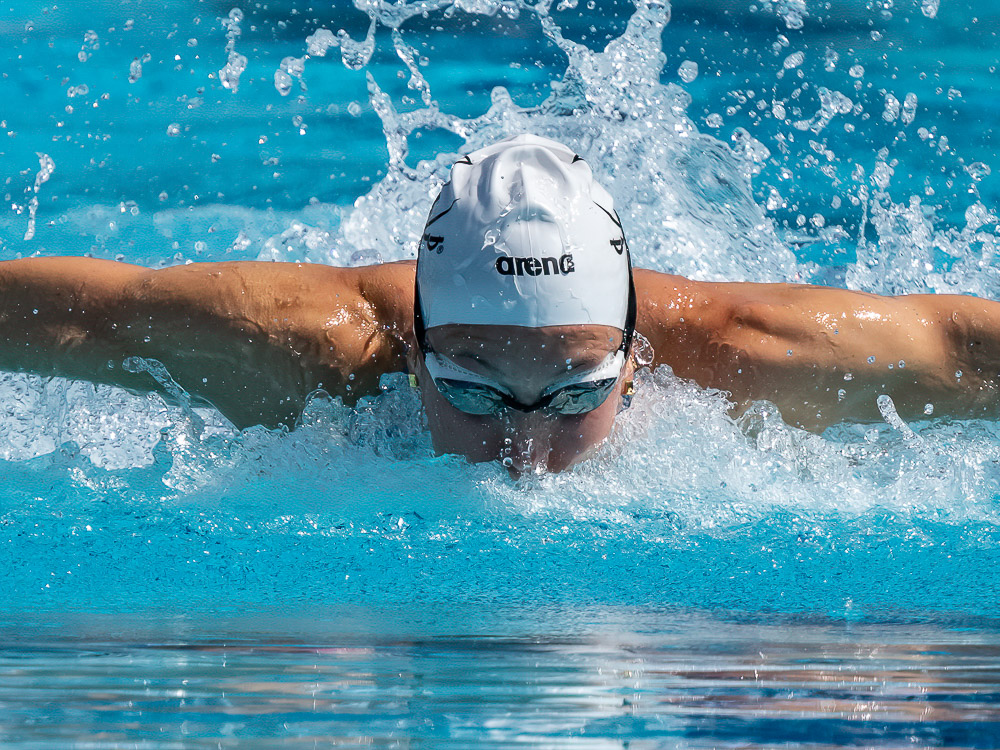The Importance of Test Sets: How They Play a Role In Development

The Importance of Test Sets: How They Play a Role In Development
By Reagan Reetz, Swimming World College Intern
Test set day is the only day in a swimmer’s week that can garner as many reactions as it does. The team spends the day anticipating and discussing it, wondering if they will improve from the last time or how difficult it will be.
Despite their difficulty, test sets serve a vital role in the training cycle. Whether it’s 100×100 on a descending interval, 10×400 fastest average, or 6×100 on three minutes, all-out main stroke, they all mean something when measuring a swimmer’s improvement.
Types of Test Sets (With Examples)
Each test set has a purpose that becomes useful to swimmers of different specialties. All swimmers can find something beneficial out of test sets, even if the focus isn’t on their primary discipline.
One type of test set would be a race-pace test set. In this type, swimmers evaluate their ability to hold the times they want in competition. For example, this may be done through the use of a repeat 4×50 on a minimal rest send-off with rest in between sets. The goal is to simulate a race.
Another type of test set would be an anaerobic test set. These sets involve quick and intense races with some rest that target lactic acid production and high heart rate. Examples would include 6×100 on eight minutes or even 24×50 on three minutes.
Aerobic ability could also be evaluated with a test set. An example of this would be a timed swim, where athletes swim for a set amount of time and see how many laps they can do while holding a moderate heart rate.
Coaches may designate those sets differently or use different types of test sets, such as a kicking test set, but these are examples of the general categories.
Demonstration of Skill
In general, the primary purpose of a test set is to demonstrate where a swimmer is within a specific skill set. For instance, anaerobic sets determine a swimmer’s stability while holding a particular pace. An anaerobic test set can determine where a swimmer may fall off of that pace if there is a dramatic change in their time between repetitions.
Ultimately, the metrics gathered during a test set are an excellent way to determine the strengths and weaknesses of a swimmer in a particular area. When specified, swimmers know what to work on in practice to improve before the next repeat of that set.
Snapshot of Current Ability
Not only can test sets evaluate skills, but they can also show exactly where a swimmer was in a moment of time. In the case of test sets involving race pace, they can provide an accurate representation of how far an athlete is to achieving that pace in competition, as well as where they need to improve to get there.
When test sets are repeated, particularly year after year, they can measure development in a beneficial way. Looking back at a test set from precisely a year ago can be a good determinant of where someone is in their training cycle and if they are on pace for what they want to achieve that season. This is why accurate documentation of test sets is essential.
Even when a performance on a test set does not show improvement, it still tells a story about what the swimmer was doing during this training. It’s possible they were out of the water for an injury or had a rough training week. This only means there is more room for improvement on the next repeat of the set.
Mental Challenge
There is a mental aspect to test sets as well. By their very nature, they are demanding when done correctly. They assess what has been prepared by an athlete in training thus far. It may be nerve-wracking for some to be evaluated this way, but overcoming this anxiety in practice may be vital for overcoming it in competition.
In the case of aerobic endurance, the sheer amount of yardage from this type of set could be highly intimidating. However, once completed, it prepares the swimmer adequately for anything of less distance and makes competition less intimidating.
Team Togetherness
Test sets are not only good for the biomechanics of swimming, but they also improve relations between teammates. There is nothing like the atmosphere of a test set day where the team is anticipating it together.
When it comes down to the actual set, it is exhilarating to cheer your teammates on and see them achieve something beyond what they thought they could do. When you can overcome and achieve something hard together, it builds camaraderie like nothing else.
All commentaries are the opinion of the author and do not necessarily reflect the views of Swimming World Magazine nor its staff.



